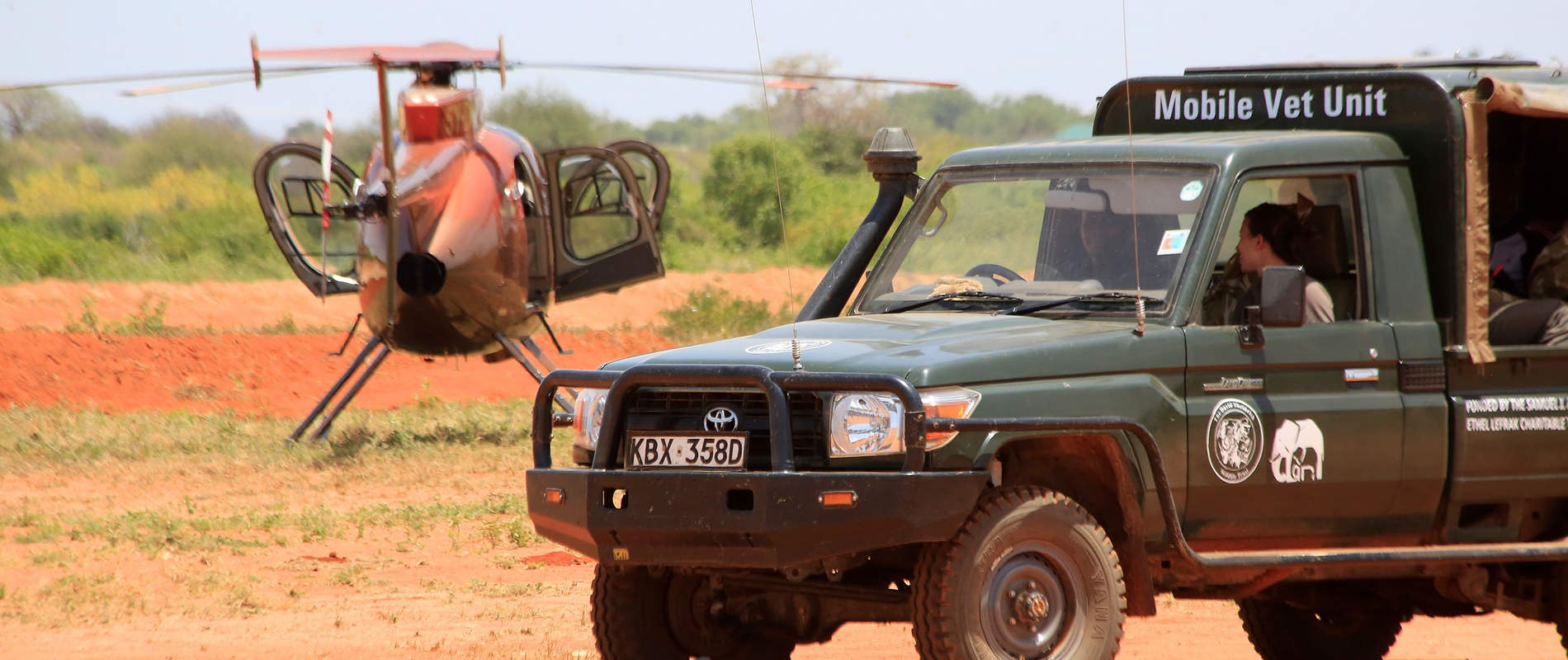February is the month of transition from wet to dry
February is the month of transition from wet to dry. Most of the water holes across the Tsavos hold water at the beginning of February and then slowly dry out when the month comes to an end. The threat of poaching of small game for meat and elephants for their ivory has increased during the month, as the local farms bordering the protected areas have finished harvesting and the waterholes make an easy target for poaching activities as water becomes more concentrated. This month the Aerial Unit has flown a total of 107.4 hrs and covered 15,834 km in support of the Kenya Wildlife Service’s activities throughout the Tsavo Conservation Area.
The Aerial Unit has spent considerable time assisting the KWS ground teams in locating and pushing elephants out of problem areas this month. A reason for the conflict between elephants and humans is due to a lack of land use policy and the fact that people are attempting to farm in locations close to park boundaries, which in the past were free of crops and settlement. The elephants always roamed these parts but now with a burgeoning human population they encounter fields of maize, schools and homesteads. The Aerial Unit brings confidence and assurance to the communities that something is being done about it. From the air it is possible to locate the groups of elephants quickly and direct ground teams to push the elephants out of conflict zones all the while supporting the local people.
This month, as expected when it dries off in Tsavo, there has been an increase in reports of poacher movements and sightings of camps and footprints. The Aerial Unit has been focusing on spot checking all the water points in the northern area of Tsavo East. Only one new shooting blind was seen, indicating that the presence of the DSWT’s aircraft and helicopter have resulted in a reduced poaching presence.
With the increased likelihood of poachers operating around the water points it was also expected that in February the number of elephant treatments would rise. There were three elephant treatments in total during February all of which were given a positive prognosis of recovery. During the month one baby elephant was also rescued from a water point. The ground team called for the assistance of the helicopter, keeping the worried herd of elephants at bay, whilst the team was able to rescue the calf and return it successfully to its mother.
Now that conditions are drying it is expected that cattle and livestock will look to return to the Parks to graze, led illegally through Park boundaries by local herdsmen looking for the best pasture. During February the Aerial Unit assisted KWS in monitoring the influx of livestock in both Tsavo East and Tsavo West, whilst KWS rangers in Tsavo West carried out an operation to clear the park of cattle in targeted areas and did so very effectively. The challenges of cattle invading the parks is one of the greatest threats to the ecosystem. Apart from the grazing, destruction of habitat, consumption of all the available water at waterholes that limits access for wildlife, the cattle and the accompanying herders also provide cover for poachers.
You can read more about the Aerial Unit’s activities in February in our monthly aerial report:








